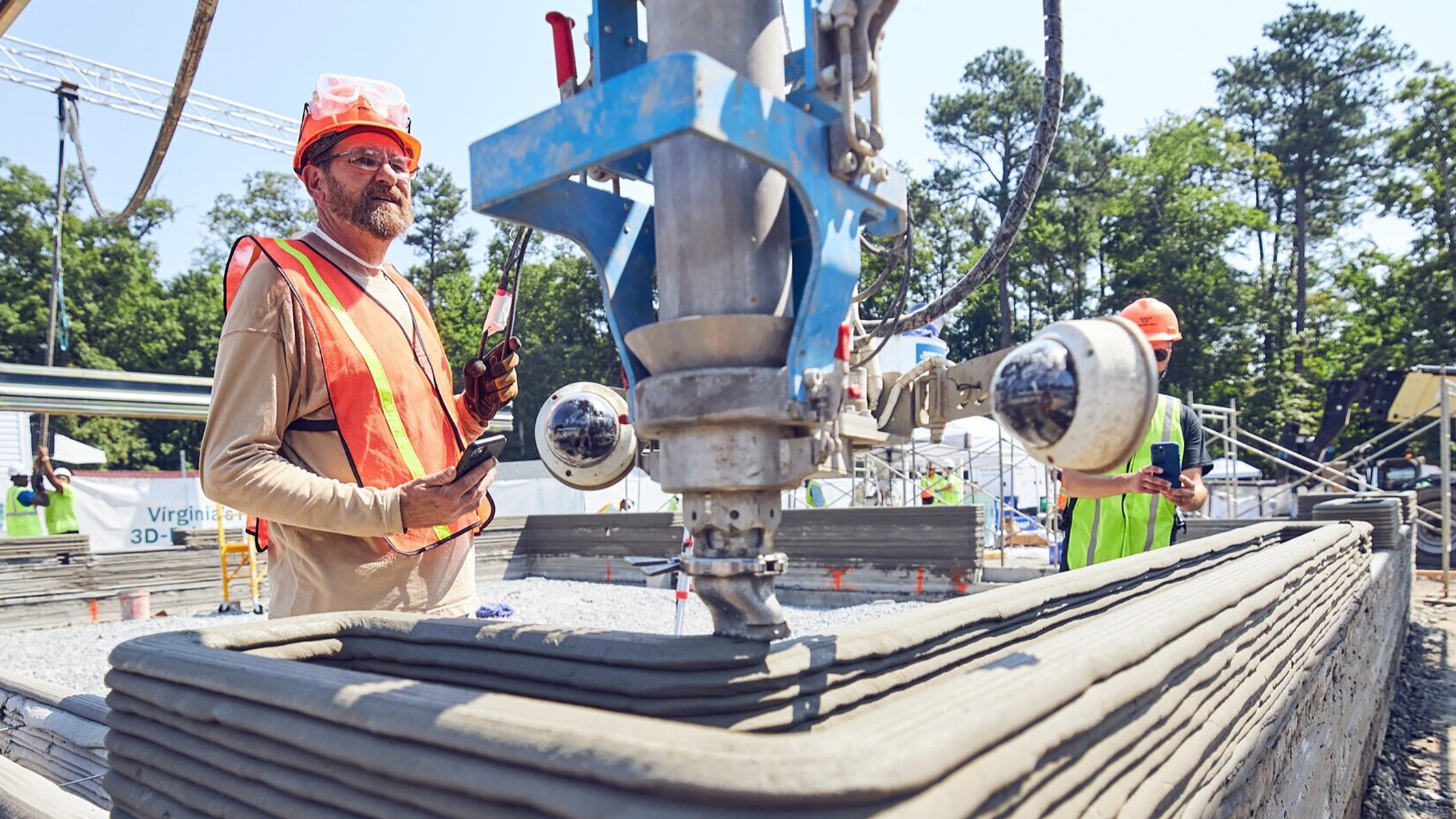How COVID-19 will change the way we design our homes

Maja Hitij/Getty Images
COVID-19 is confounding planning for basic human needs, including shelter.
Around the world, home builders are vigilantly reading tea leaves in the fog, trying to figure out how to survive (and even thrive in) an unfolding economic disaster. And we mourn the fallen, working to keep our loved ones healthy and safe.
COVID-19 has drawn a political dividing line in much of the world. It reminds me of something an American revolutionary, Samuel Johnson, said in 1775: “Patriotism is the last refuge of the scoundrel.” In my story, the scoundrel is this virus – COVID-19.
Home builders construct the physical environments for families, who turn them into homes – homes we hope are filled with laughter, love, aspiration and celebration. Good housing is the cornerstone of strong communities.
Much of how COVID-19 impacts us will be determined by science, but not all. “The question of how the pandemic plays out is at least 50% social and political,” Sarah Cobey, epidemiologist and evolutionary biologist at the University of Chicago, told Scientific American.
Just as the Spanish flu gave us the vanity room, which originated as a hand-washing basin immediately inside the front entry of a home, COVID-19 will influence innovation in home design.
Open-plan, ever-larger houses have ruled the market for decades, even though family size has shrunk and middle-class real earnings have remained flat. U.S. households averaged 2.44 children in 1965 but 1.9 by 2015. With 128.6 million households, that’s 7 million fewer children. Yet the average size of U.S. houses grew 62% from 1973-2015, from 1,660 square feet to 2,687. House size was still growing in 2018. In Canada, houses have also grown as families shrunk. In Europe, average house size has grown to 1,880 square feet (which Europeans will say astounds them).
Pandemic thinking will likely favour less-open spaces (though people will crave nature-positive spaces), perhaps reviving cozy dens to supplement living rooms. Spending may shift into less obvious enhancements of safety and comfort. Better interior insulation will enable quieter places. Screened-in porches and outdoor spaces, and new approaches to landscaping will help keep mosquitoes and other disease-bearing critters at bay. A bedroom, kitchen, living room area and bath that is a little removed from the core of the house will accommodate adult children now and elderly parents later (at Lennar, we call this the Next Gen Home). Split HVAC systems can prevent sickroom air from being pumped into everybody’s space. Such mini-HVAC systems with no ductwork have become very affordable.
Home-based jobs call for better home offices (Lennar calls this the Next Gen Home Office). The infamous toilet flush in the background of U.S. Supreme Court by-telephone oral arguments underscored the perils of inappropriate home-work spaces. So do videos of children and pets interrupting conference calls or other tasks. A larger home-based work force will drive designers to balance job requirements with the privacy and safety of the family.

Pandemic-inspired housing innovation will collide, however, with three critical forces that were already simmering pre-COVID and are now at a high boil.
- Techno-Accelerations. The pandemic has accelerated the already-brisk integration of real and virtual activities, including remote work, remote health, and remote education. But electric and automated vehicle compatibility, delivery-enablement systems, frictionless purchasing and the Internet of Things (IoT) enabling the remote maintenance and repair of homes . . . all require fast bandwidth – faster even than 5G. It also requires security: in a geopolitical environment where surface attack areas have expanded, we all want military-grade cybersecurity.
- Climate. As China began publicly grappling with deaths from COVID-19 in mid-January 2020, the World Economic Forum’s “2020 Global Risks Report” was released. It warned that climate change makes more of the planet hospitable to infectious pathogens. Resilience is therefore the watchword of the remainder of the century. Energy and flood resilience, and smart insurance and other financing products that will encourage a great migration away from the coasts . . . these are the characteristics of the new urban morphology brought about by climate change.
- Social Justice. While COVID-19 did not cause the social justice movement that swept many parts of the world this summer and the U.S. in particular, the virus amplifies economic burdens which, in turn, exacerbate the movement’s root causes: income inequality is central to this dynamic. The Institute for Policy Studies found America’s 400 richest people are worth $US3 trillion, more than all African-American households plus 25% of Hispanic households combined. There’s little doubt these numbers err on the low side now. COVID-19 has wiped out the ready resources of many families and that will spark varying degrees of political reaction globally. Populist housing policies that threaten capital investment could deter home building and contribute to future housing crises. Inclusionary housing programmes that accelerate wealth creation among traditionally excluded populations, enable financing, inject innovation into housing use and urgently work toward housing security for vulnerable populations will underpin how governments reallocate precious housing-related subsidies.
The ghosts of the 2008 financial crisis hang over the pandemic economy. But the 2008 crisis was housing-ignited. High-risk mortgages drove up the prices of houses buyers couldn’t afford but bought anyway. This textbook housing bubble was buoyed by an irrational conviction that prices would keep rising and rising. Low interest and inflated housing values led millions to refinance or, in the U.S., extract home equity loans to pay for remodelling, cars, boats, campers, and bucket-list quests. The housing bubble popped and its bad ink seeped through world economic systems.
A 6 January 2020 Washington Post article opened with: “A strong job market and low mortgage rates should sustain the housing market in 2020. The problem will be finding enough homes for buyers. With unemployment hovering at a 50-year low and interest rates well below historical norms, the real estate industry is being dragged down by scarcity in housing stock….”
Within three months, U.S. unemployment had surged to historic levels (more than 23 million Americans were officially unemployed at the start of May, more than 30 million by the end) but that Washington Post article still holds true today. Low mortgage costs in the U.S. and the developed world continue to drive affordability. And the deficit in housing production inherited from the 2008 crisis still constrains supply while, at the same time, millennials all over the world are starting their families.
Sales of existing houses — normally about 90% of the U.S. market — have been eviscerated this year. New homes are favoured over resale, and de-urbanisation is occurring where it can. If new-home sales of the late spring and, as reported in the media, the early summer, continue, 2020 could be a fair year for new home builders. There’s been a big jump in online sales of new homes, a global spike in online home-searching activity, and purchasing occurring often without buyers even walking through a house. A new, fully warranted home, bought without having to spend time with realtors and owners, has great appeal.
In the last century, vaccines and the public health movement largely eliminated dreaded contagious disease in much of the world. Industrialised countries have periodic outbreaks that remind us of this danger, among which, the HIV/AIDS, SARS, Zika, and West Nile viruses. Public health professionals tell us we could be entering an era in which mass urbanisation, climate change, stressed natural eco-systems and other factors will yield a pandemic (or something approximating one) every 7-10 years. This will force a reckoning with what it means to work together toward a better future. But we will also realise that we will all seek refuge in a home. Maybe knowing that will be our true last refuge.
Reprinted with permission of the World Economic Forum. Read the original article.





